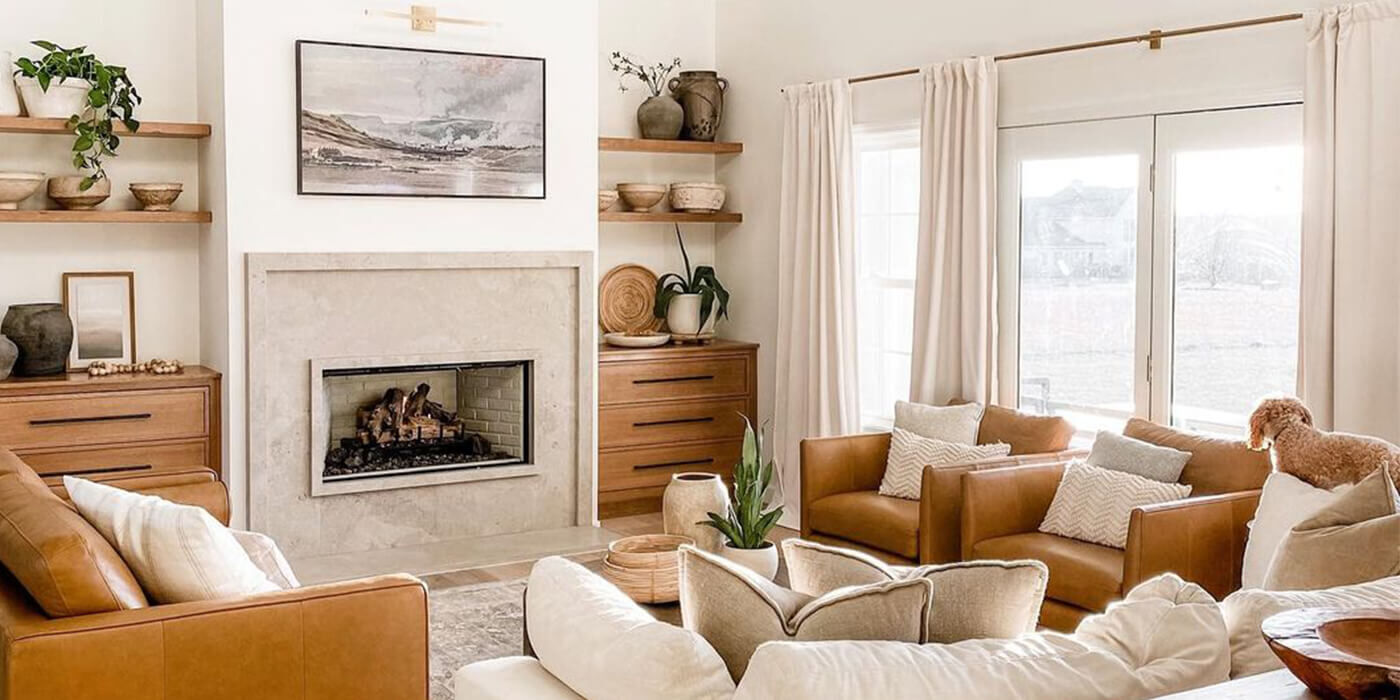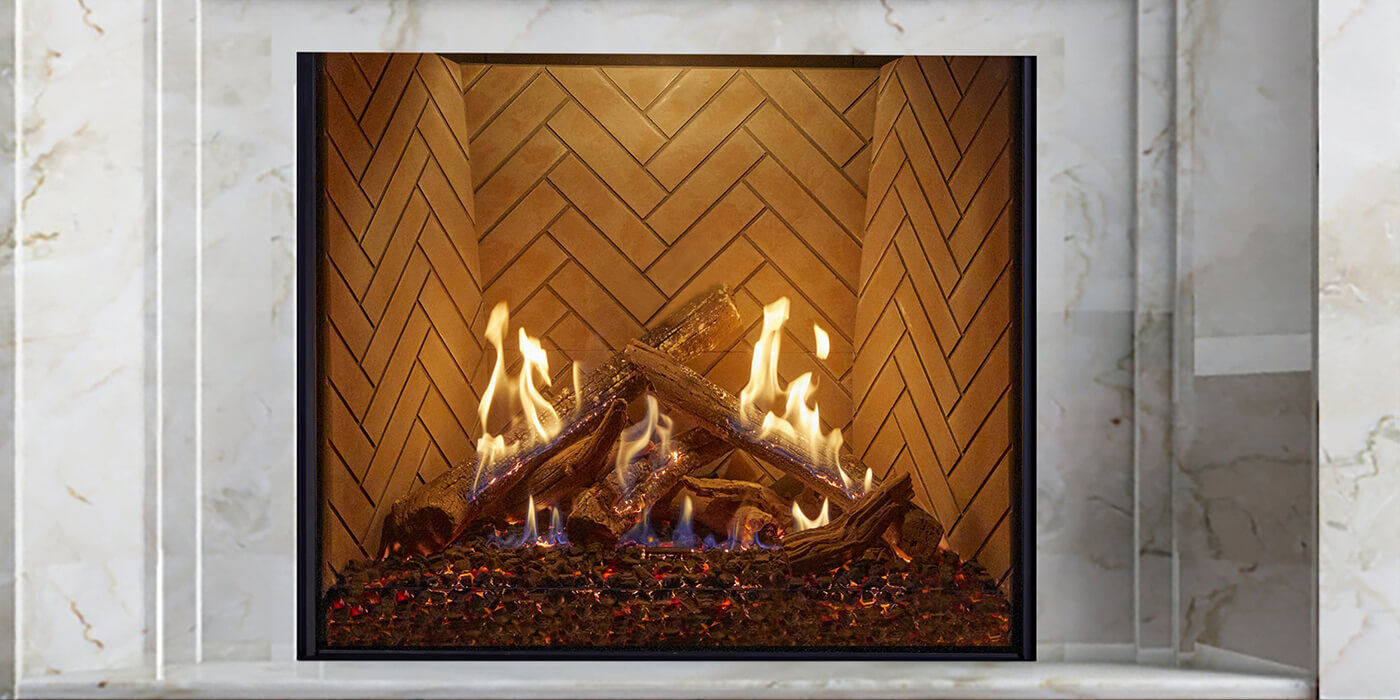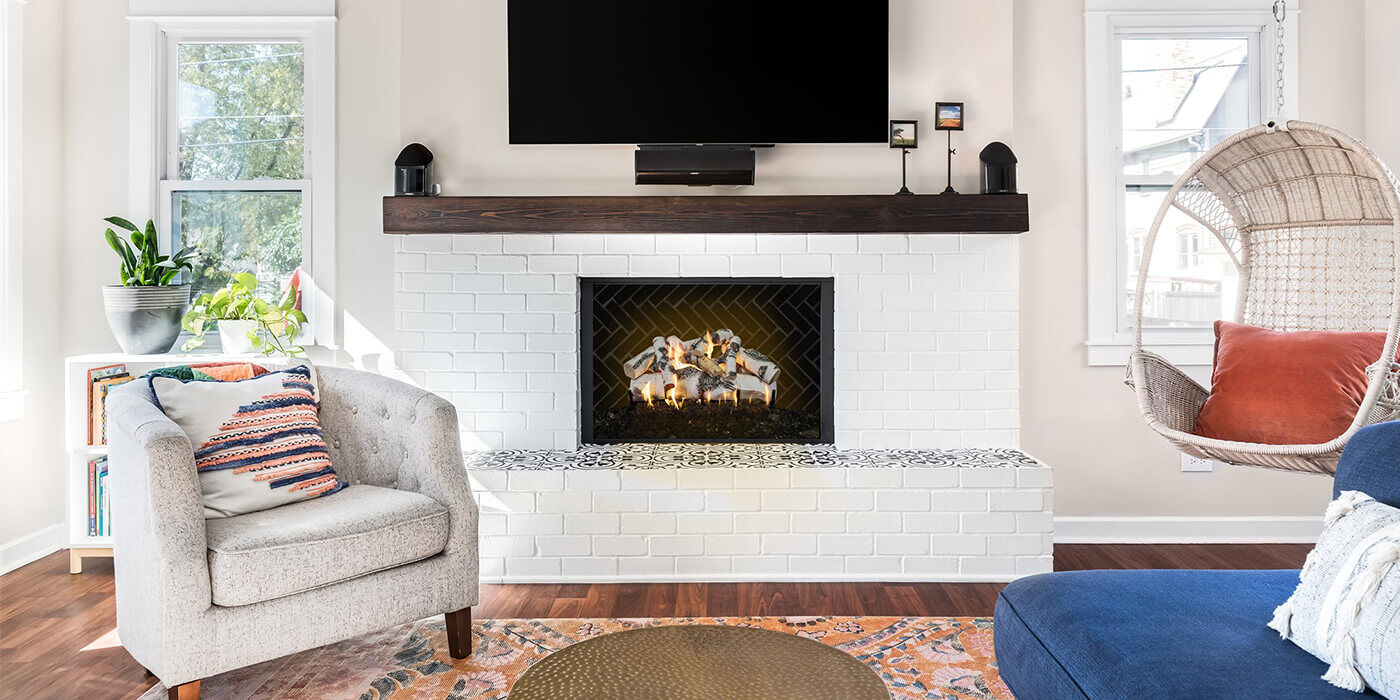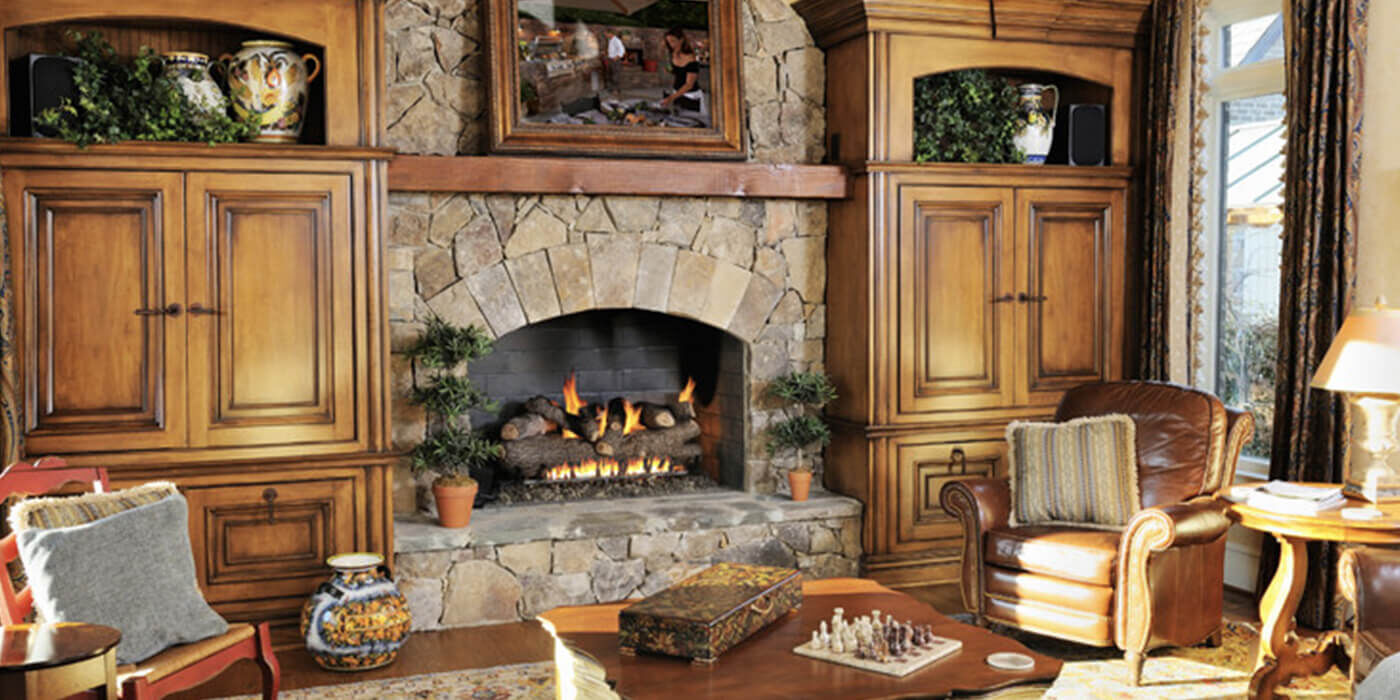By: Garrett Jamieson, NFI Certified Master Hearth Professional
Last Updated: September 25, 2025
There’s nothing better than unwinding in front of cozy, flicking flames at the end of the day. But if you’ve been relying on wood burning fires, you already know they can be messy, time-consuming, and even expensive to maintain.
Gas logs offer the perfect blend of warmth, ambiance, and convenience. They create the same comforting look and feel as a traditional wood burning fireplace, but with much less work, upkeep, and safety precautions. Gas logs also cost less to operate than wood fireplaces.
With so many log sets out there, it can be tough to choose the right one. This guide walks you through everything you need to know about selecting gas logs — from styles and fuels to sizing tips — so you can confidently pick the best fit for your fireplace!
Why Gas Logs Are Worth Considering
Gas log sets replicate the look of real wood while providing a cleaner, more efficient, and more convenient heating source.
With their easy operation, minimal maintenance, and ability to enhance both comfort and home value, gas logs are an option worth exploring for anyone looking to capture the charm of a traditional hearth without the drawbacks of burning real wood logs.
Gas logs also allow you to transform an existing fireplace. For example, by inserting a gas log set into an old, outdated wood fireplace, you can turn it into a modern, efficient gas unit that still looks rustic, cozy, and authentic.
- Effortless Fires: No need to stack, chop, or haul wood. Just flip a switch or use a remote to enjoy instant flames.
- Cleaner Burns: Gas logs create fewer particulates and ash compared to wood fires, making cleanup simple.
- Consistent Performance: While wood burns unpredictably, gas logs provide steady heat and a controllable flame.
- Year-Round Use: Many models let you enjoy the ambiance without producing excess heat, perfect for warmer months.
Choosing the Right Fuel Type
Your first decision when choosing gas logs is fuel – natural gas or propane.
- Natural Gas Logs: Ideal if your home already has a natural gas line. They’re cost-effective, clean-burning, and great for frequent use.
- Propane Gas Logs: Perfect for homes without natural gas access. Liquid propane burns hotter, offering more warmth, but usually costs more and requires tank refills.
Pro Tip:
You can’t switch fuels on the same log set. Be sure to buy logs designed for your home’s fuel source.
Understanding Venting Styles
There are two types of gas logs – Vented and Ventless (Vent-Free). They work differently, have distinct installation requirements, and offer unique benefits.
Here are the key considerations:
Vented Gas Log Sets
- Best for wood burning fireplaces with working chimneys
- Produce the most realistic flame patterns
- Prioritize ambiance over heat efficiency
Ventless Gas Log Sets
- Do not require a chimney, flue, or any kind of venting system
- Burn fuel so efficiently that nearly all heat stays indoors
- Slightly less realistic flame patterns
- May add moisture to your home’s air
- Restricted in some areas (check building codes)
In short, if you’re looking for the most natural flame look, Vented logs are the way to go. For more efficiency and heating power, Vent-Free gas log sets are best.
Check out our top gas log sets for vented gas fireplaces here or explore our best-selling logs for ventless gas fireplaces here.
Selecting a Log Style
One of the most enjoyable parts of selecting a gas log set is choosing your design. Today’s fireplace log options mimic a wide variety of wood types and aesthetics.
Popular choices include:
- Traditional Oak or Birch Logs: Classic, timeless look for any fireplace.
- Driftwood or Coastal Styles: Casual, weathered designs to match coastal or modern homes.
- Charred or Burnt Logs: Highly realistic sets that mimic real logs burning down over time.
- Fire Glass, Fire Stones, or Cannon Balls: A sleek, contemporary alternative to logs, ideal for modern interiors.
Match your log choice to your home’s overall vibe — rustic homes shine with oak, while lofts or beach houses look great with driftwood or glass.
Sizing Your Gas Logs Correctly
Choosing the right size is just as important as picking a style. Logs that are too large can block airflow and affect performance, while logs that are too small may look awkward.
To find the right gas log size, measure your fireplace width, depth, and height. Leave some room for clearance, burners, and safety features.
Follow manufacturer recommendations — they usually provide sizing charts.
Pro Tip:
If you need help sizing your gas log set, please reach out to our NFI Certified Master Hearth Professionals at 800.919.1904.
Lighting & Controlling Your Logs
How you light your fire impacts convenience:
- Match-Lit: Simple, affordable, requires manually lighting the burner.
- Manual Safety Pilot: Uses a standing pilot flame and a control knob.
- Millivolt: Easy to use with wall-switch or remote controls.
- Electronic Ignition / Remote Control: The most convenient option — start your fire with a button or remote. If convenience is key, electronic ignition systems are worth the upgrade.
Accessorizing Your Log Set
Enhance your fireplace’s look and feel with accessories:
- Glowing Embers: Create a realistic, smoldering firebed.
- Decorative Firebacks: Reflect heat and add a dramatic backdrop.
- Fireplace Screens: Improve safety and style.
Prioritizing High-Quality Materials & Safety
When shopping, remember that not all gas logs are created equal.
The best gas logs are made of ceramic fiber or a refractory ceramic mixture that can withstand extreme temperatures. Some high-quality ceramic log sets even have steel reinforcement rods added to the middle for extra strength.
You’ll also need to hire a professional installer to safely set up your logs and schedule annual fireplace inspections to keep them running efficiently. Professional installation ensures your logs are installed properly and comply with any codes.
Maintaining Your New Gas Log Set
Gas logs are low maintenance, but a little care keeps them looking and performing their best. Here are some quick tips:
- Have a certified technician check your system annually.
- Dust or vacuum logs gently when cool — never use water or harsh cleaners.
- Ensure your pilot flame burns steady and blue (not yellow or flickering).
FAQs
High-quality refractory ceramic or cement gas logs can last 5–10 years or longer.
Yes. Ventless logs are designed for clean, efficient burning, but they release small amounts of moisture into your home. Always follow your local codes and check the manufacturer instructions for proper log placement and room sizing.
Professional installation is strongly recommended. It ensures safe connections, proper ventilation, and protects your warranty.
Turn off the gas and let everything cool. Gently brush or vacuum away dust. Avoid water and harsh cleaners, which can damage the logs.
We’re Here to Help
Have more questions about gas logs? Reach out to our NFI Certified experts today at 800.919.1904.
 |
Garrett Jamieson has been a Technical Sales Representative at Woodland Direct for over a decade. As an NFI-Certified Master Hearth Professional, he's well versed in fire products and safety standards. He strives to help clients understand product features and best installation practices, so they can find products that fit their home and lifestyle. Outside of work, Garrett spends most of his time outside, riding bikes, bowling, camping, grilling, chopping wood, and tackling DIY projects with his family. Call him or one of our experts in fire at 800.919.1904. |




